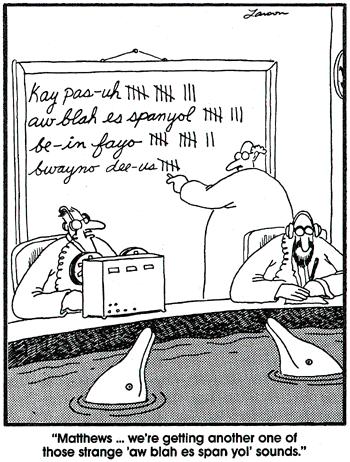Is Your Sales Force Really That Dumb … Or Are They Just Misunderstood?
Ah, that pesky sales force. Why don’t they:
- Follow the selling methodology you’ve developed with much expense and rolled out with great sweat?
- Call on more senior-level buyers, for goodness sake — don’t they realize those are the people with adult money and fat wallets?
- Just use the tools you’ve developed for them — all they need to know has already been figured out.
- Sell more stuff to their existing customers — with so many things to sell, how can they NOT be successful?
- Stay on your brand message? It’s like each rep has created their own version of the truth.
Do any of these thoughts sound familiar to you?
No matter where you sit inside your organization (executive leadership, department head, marketing, etc.), you cannot help but bring a strong bias that drives your perception of the sales force. But is that perception a reality?
Here is a synopsis of a conversation I’ve had dozens of times with business unit leaders or CEOs talking about their frustration with their sales performance:
|
Q (me). What do you think is the core issue standing in the way of your success? A (executive). I don’t think we have the right people. Q. Why not? A. They just are not able to communicate the value of our portfolio in a way that is meaningful to our customers. Q. And you think that’s a staffing issue? A. Yeah, we just need better people. Q. Did your company hire all of those people? A. Yes. Q. So, you have a practice of hiring poor performers, then? A. No, of course not. We only hire the best. Q. So, if you have hired the best performers, and you are telling me now that you need to get better people, how did they become poor performers? Have you considered the possibility that your organization is making them bad sales people? A. [Pause] … You know, that is a great point. You might be right; how can I look at this differently? |
The point here is that, in a lot of cases, we’ve become conditioned to just blame sales — which translates into — it's the fault of the salespeople; if we fix them we solve our woes. In actuality, there are major tectonic forces at work that are fundamentally altering the role of the salesperson. In our research on buying executives, we’re told that how your firm engages with them at the point of sales (through salespeople) is much more a differentiator that what you actually see.
That’s a scary thought, isn’t it?
So, if you accept the notion that how you sell is becoming as (or more) important than what you sell, doesn’t it make sense then to better understand what’s really going on in the trenches?
I get to speak with hundreds of salespeople every year — I’ve yet to meet one who doesn’t want to sell more of the products and services your company sells.

So, where is the disconnect?
The simplest way I can describe this condition of the misunderstood sales force is one word — bias. Depending on your role inside the organization, you only see a small slice of what a salesperson actually has to do each day to be successful.
- If you are a subject-matter expert — you don’t see how much energy went in just to get the meeting with that buyer you thought the salesperson was so ill-prepared for.
- If you are a trainer — you don’t see how different the conditions are in the field from the highly generalized role plays you developed with internal thought leaders.
- If you are a product marketing manager — you don’t see how different the conversations are at various stages of the sales process or how they change as salespeople navigate to different stakeholders.
- If you are an executive — you don’t see how many random acts of sales support are pushed onto sales, the degree to which those resources are disconnected, and how much confusion that creates.
The point here is that many people in the organization are projecting a tremendous amount of their perceptions onto the sales force and calling a sales problem a salesperson problem.
In reality, all of the people who provide resources for direct consumption by the sales force are part of a selling system. In order to understand how to fix the sales productivity problem, you first need to understand the challenges faced by the tip of the spear.
In our next teleconference, we will explore that question – what’s going on in the trenches — and understand why the sales force is so misunderstood.
- Date: Tuesday, Oct 12
- Time: 11:00–12:00 (Eastern standard time) (50 min. presentation, 10 min Q&A)
- Registration: Free to clients, non-clients contact your Forrester representative for a complimentary pass
Information on the teleconference
http://www.forrester.com/rb/teleconference/why_sales_force_is_so_misunderstood/q/id/6788/t/1